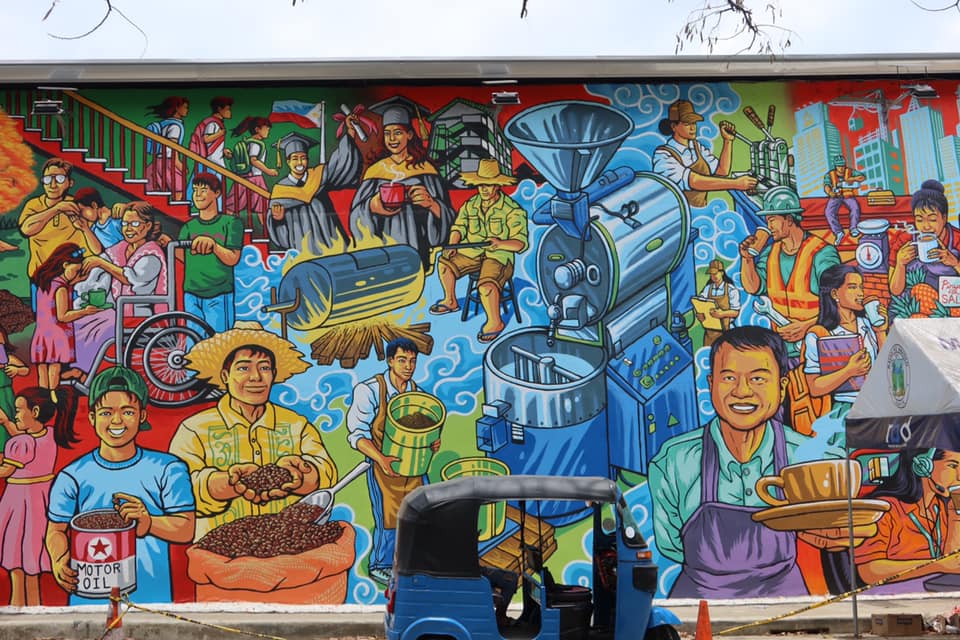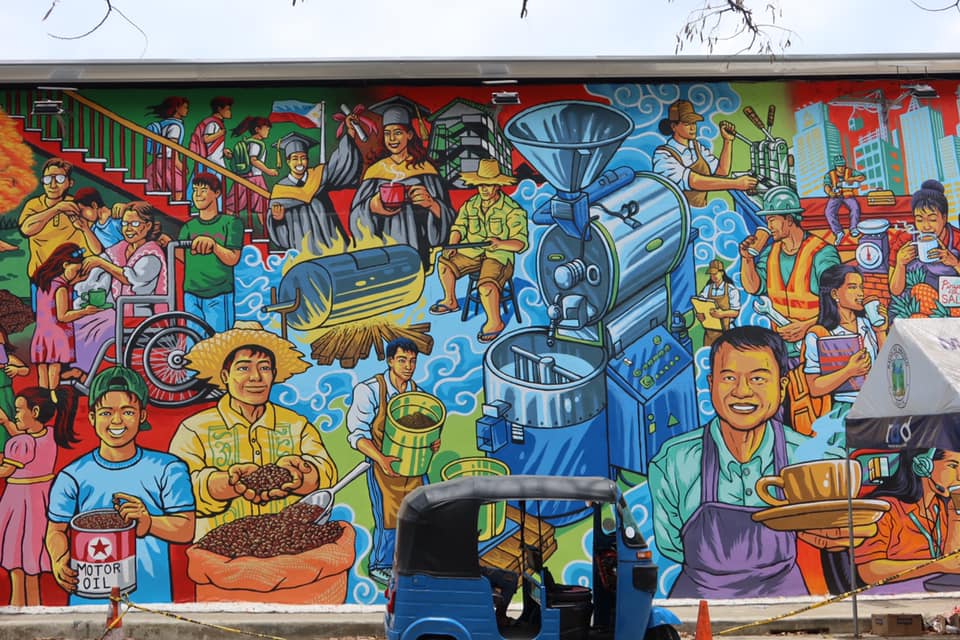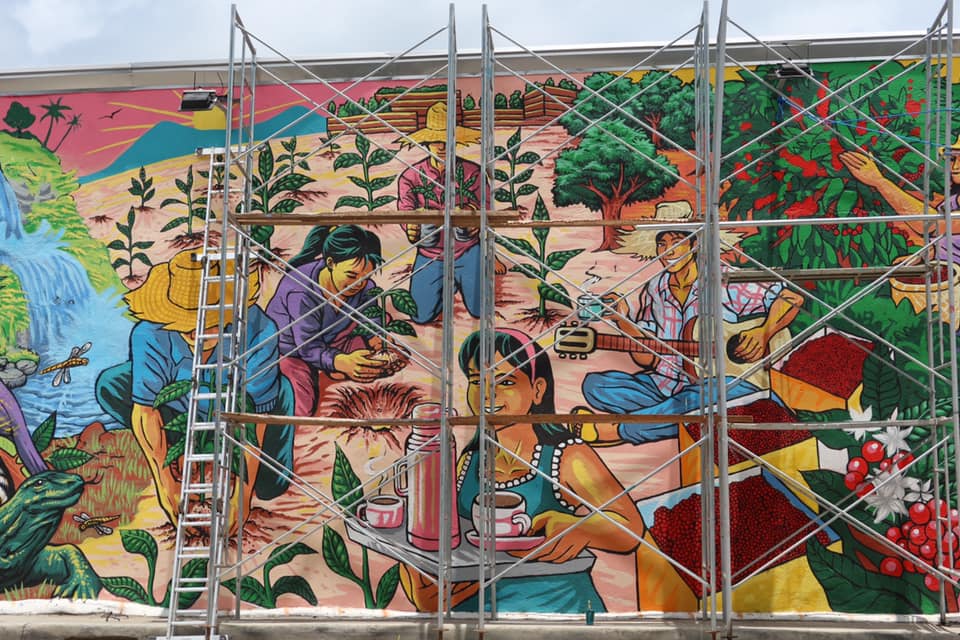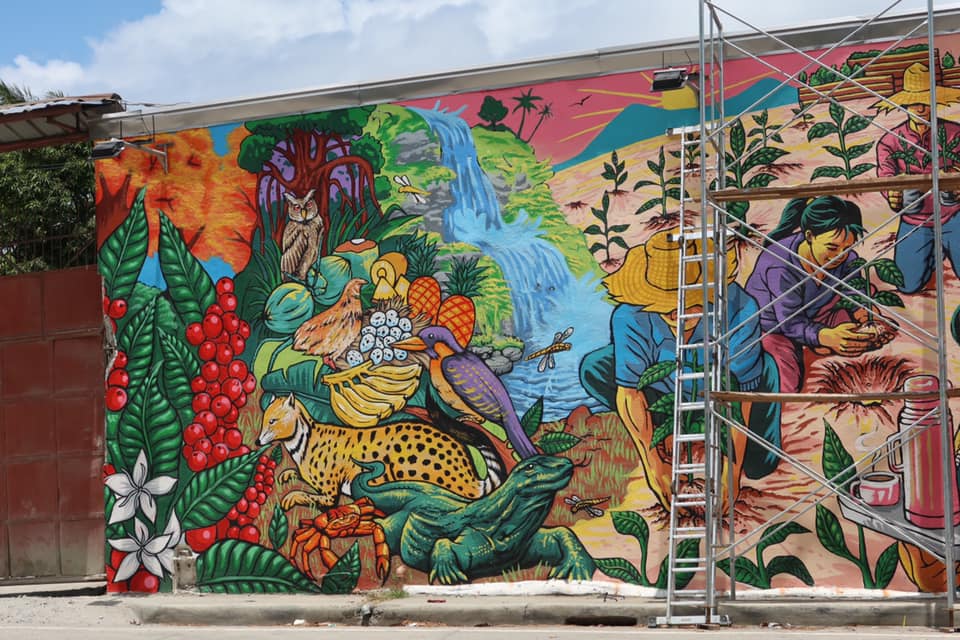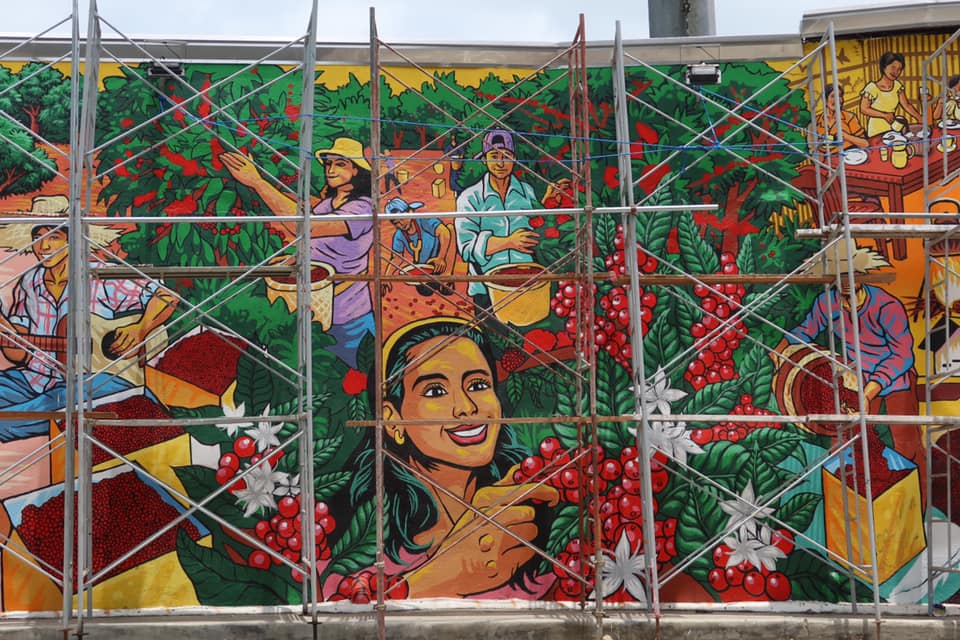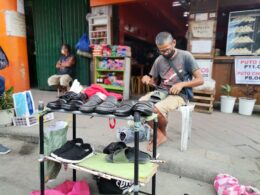CAVITE – To promote the Municipality of Amadeo as one of Cavite’s Agri-Tourism Hub, the local government unveiled its Coffee Culture and Heritage Mural project this April.
The almost 20-meter long mural captured the attention of Amadeo residents and motorists passing along Crisanto M. de los Reyes Avenue at Barangay Poblacion 4.
The art project, which started last March 1, features Amadeo’s coffee culture and its traditions to preserve their proud heritage.
The Gerilya, a group of street artists, were commissioned by the LGU to create this project.
Moreover, Davies Paint Inc. shouldered the various paints, scheduled maintenance and restoration of the artwork.
The National Commission for Culture and the Arts (NCCA) gave their sponsorship for the artists in creation of the mural project.
The Municipality of Amadeo is dubbed as the “Coffee Capital of the Philippines” and known for its Pahimis Festival.





